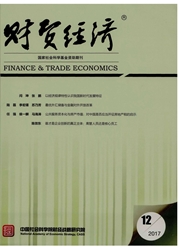

 中文摘要:
中文摘要:
20世纪90年代以来,世界各国普遍追求货币政策的透明化,这一制度选择已成为央行实践的重要现象,考察货币政策透明化的宏观经济效应则是理论界和实务界的关注焦点。为对中国货币政策透明化进行实证分析,本文在传统VAR模型的基础上构建PTVP—SV—FAVAR模型:首先,设定概率时变的斜率系数以刻画转轨经济体中经济结构和经济主体行为的时变性;其次,引入随机波动率以捕捉经济结构冲击波动的时变性;最后,通过扩展因子的方法以最大程度地包含经济系统的完整信息。实证结果发现:(1)中国货币政策透明化在1998—2006年期间降低了通货膨胀水平,而在2007—2011年期间提高了通货膨胀水平;(2)货币政策透明化增强了通货膨胀持续性;(3)货币政策透明化在短期内降低产出增长,长期则是提高产出增长;(4)货币政策透明化有利于产出增长的稳定,但加剧了通货膨胀的波动,对通货膨胀波动的恶化效应在宏观经济不确定增强时期更为明显。
 英文摘要:
英文摘要:
Pursuing transparency of monetary policy has been becoming a major policy choice for worldwide nations since 1990s, and it is also an important phenomenon in central bank practice. Therefore, examining its macroeconomic effects is getting more and more attention both in theoretical and practical fields. To empirically analyze the transparency of monetary policy in China, this paper constructs a PTVP-SV-FAVAR model on the basis of traditional VAR model. Firstly, time-varying set of parameters is set to characterize the time variability of economic structure and the behavior of economic agents in transition economies. Secondly, stochastic volatility is introduced to capture the time-varying shock of the economic structure. Finally, the factor method is applied to make sure the maximum entirety of information in economic system. The empirical results show that transparency of monetary policy in China lowered the level of inflation from 1998 to 2006, but raised that level during 2007 to 2011. It enhances persistence of inflation, reduces the growth of output in the short term, but improves that in long term. The transparency of monetary policy is conducive to the stability of the growth of output, but exacerbates the volatility of inflation, which is much more obvious in enhancement period of uncertainty in macro-economy.
 同期刊论文项目
同期刊论文项目
 同项目期刊论文
同项目期刊论文
 期刊信息
期刊信息
